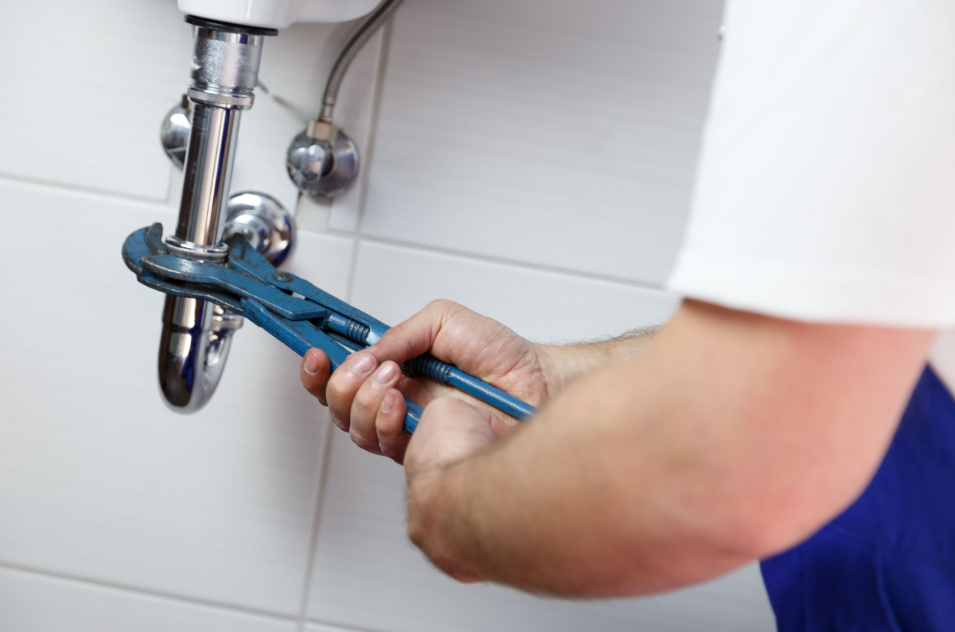Plumbing problems can be frustrating, but not every issue requires a professional plumber. Many common plumbing issues have simple fixes that homeowners can handle on their own, saving both time and money. Here are ten frequent plumbing problems and how you can fix them before calling in an expert.
1. Dripping Faucets
A dripping faucet is one of the most common plumbing issues, often caused by a worn-out washer or O-ring inside the tap.
How to Fix It:
- Turn off the water supply to the faucet.
- Remove the faucet handle using a screwdriver.
- Take out the old washer or O-ring and replace it with a new one.
- Reassemble the faucet and turn the water back on. If the problem persists, the faucet may need a more extensive repair or replacement.
2. Clogged Drains
Slow or clogged drains can lead to water backups, making everyday tasks difficult. This issue is usually caused by a buildup of soap, hair, grease, or food particles.
How to Fix It:
- Use a plunger to create suction and dislodge the clog.
- Pour a mixture of baking soda and vinegar down the drain, let it sit for 15 minutes, and flush with hot water.
- Try a drain snake or auger to remove stubborn blockages.
- Avoid using chemical drain cleaners, as they can damage pipes.
3. Running Toilet
A running toilet can waste a significant amount of water and increase your utility bills. The cause is often a faulty flapper valve or float mechanism.
How to Fix It:
- Remove the tank lid and inspect the flapper valve. If it’s worn out or misaligned, replace it.
- Adjust the float so that the water level stops at the correct height.
- Check the chain connecting the flush handle to the flapper. If it’s too long or short, adjust it.
4. Low Water Pressure
Low water pressure can make it difficult to wash dishes or take a proper shower. It’s often caused by a buildup of sediment in the aerator or pipes.
How to Fix It:
- Unscrew the faucet aerator and clean it with vinegar to remove mineral deposits.
- If the issue persists, check for leaks in your plumbing system.
- If all faucets are affected, there may be a problem with the main water supply, and you should contact your water provider.
5. Leaky Pipes
Leaky pipes can cause water damage and mold growth. They’re usually caused by loose joints or cracks in the piping.
How to Fix It:
- Shut off the main water supply.
- Dry the leaking area and apply plumber’s tape or epoxy putty as a temporary fix.
- For a longer-term solution, replace the damaged pipe section or tighten loose connections.
6. Garbage Disposal Not Working
If your garbage disposal stops working, it may be jammed or overloaded.
How to Fix It:
- Make sure the unit is turned off and unplugged.
- Press the reset button located on the bottom of the disposal unit.
- Use an Allen wrench to manually turn the blades and dislodge any stuck debris.
- Avoid putting fibrous foods, grease, or hard objects down the disposal to prevent future issues.
7. Water Heater Not Producing Hot Water
A lack of hot water is often due to an issue with the heating element, thermostat, or pilot light.
How to Fix It:
- Check if the pilot light is out and relight it if needed.
- Adjust the thermostat to a higher temperature.
- If you have an electric water heater, reset the circuit breaker.
- If the problem continues, the heating element may need replacement.
8. Toilet Clogs
A clogged toilet can be an unpleasant and urgent issue, often caused by flushing excessive toilet paper or non-flushable items.
How to Fix It:
- Use a plunger to create suction and dislodge the clog.
- If plunging doesn’t work, use a toilet auger to break up the blockage.
- To prevent future clogs, avoid flushing wipes, paper towels, and hygiene products.
9. Sewer Line Backup
A sewer backup can cause foul odors and slow drainage throughout your home. It’s usually caused by tree roots, grease buildup, or debris blocking the sewer line.
How to Fix It:
- Try using a drain snake to remove any obstructions.
- Pour enzyme-based cleaners into your drains to break down organic material.
- If multiple drains are affected, the issue may be in the main sewer line, requiring professional assistance.
10. Noisy Pipes
Banging or rattling pipes, known as water hammer, occur when water flow is suddenly stopped, creating shock waves in the pipes.
How to Fix It:
- Secure loose pipes with brackets or insulation.
- Drain your plumbing system by turning off the main water supply and opening all faucets, then turn the water back on slowly.
- Install a water hammer arrestor if the problem persists.
When to Call a Professional Plumber
While many plumbing issues have simple fixes, some problems require professional expertise. Call a plumber if:
- The issue persists after trying DIY solutions.
- There is major water damage or flooding.
- You notice foul odors, indicating sewer line issues.
- Pipes have burst or are severely leaking.
Final Thoughts
Plumbing issues can be a hassle, but knowing how to troubleshoot and fix common problems can save you time and money. Regular maintenance, such as cleaning drains, checking for leaks, and avoiding clog-prone materials, can prevent many plumbing problems from occurring in the first place. However, when in doubt, don’t hesitate to call a professional plumber to ensure a safe and permanent solution.

